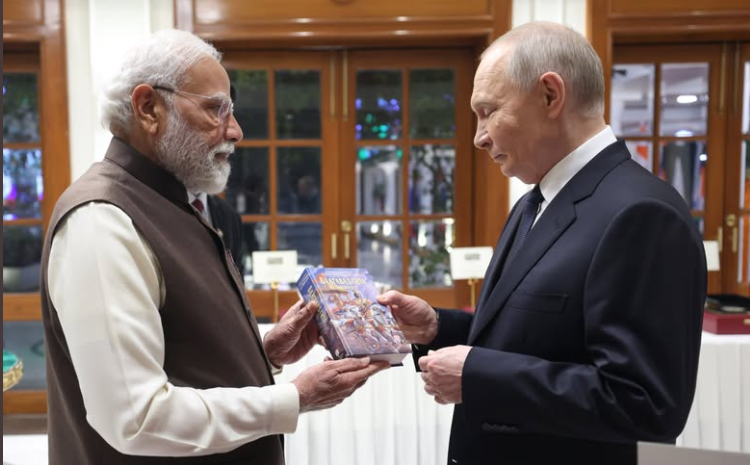India’s Space Odyssey: Shubhanshu Shukla’s Historic Journey to the ISS
- Induqin
- Jun 27
- 4 min read
Shubhanshu Shukla’s historic journey to the International Space Station (ISS) marks a pivotal moment in India’s space ambitions. As the second Indian in space, Shukla’s mission, part of Axiom-4, symbolizes a shift from symbolic gestures to strategic advancements, aligning with India’s indigenous Gaganyaan program. His 14-day mission aboard SpaceX’s Dragon spacecraft gathers vital data for future human spaceflights while strengthening Indo-US space collaboration. Shukla’s inspiring journey sparks excitement among India’s youth, potentially igniting a new era of sustained human presence in space.

In a significant milestone for India’s space ambitions, Shubhanshu Shukla, a member of the Axiom-4 crew, reached the International Space Station (ISS) on Thursday. His arrival marks a defining moment, as he becomes the second Indian to journey into space, following in the footsteps of Rakesh Sharma’s 1984 mission. Shukla’s presence on the ISS signifies not only a personal triumph but also a pivotal step in India’s evolving space exploration narrative.
A Message from Space
Shortly after entering the ISS, Shukla delivered his first message in Hindi, expressing his gratitude and excitement about the mission. “With your love and blessings, I have safely reached the International Space Station,” he said, acknowledging the challenges of adapting to space conditions. Despite feeling some discomfort and heaviness in his head, Shukla assured his countrymen that these were minor hurdles.
“For the next 14 days, we will conduct numerous scientific experiments and share updates with you,” he added. Carrying the Indian tricolour on his shoulder, Shukla underscored the historic significance of the mission. “This marks the first step in India’s own space journey. Let’s make this an exciting adventure together. Jai Hind, Jai Bharat!”
Shukla also expressed heartfelt thanks to the ISS crew, who had warmly welcomed him aboard. “The minute I entered the ISS, it felt like walking into a friend’s home. My expectations have been exceeded, not just by the breathtaking views but also by the camaraderie of this incredible team,” he said.
A New Chapter in Indian Space Exploration
Shukla’s journey aboard SpaceX’s Dragon spacecraft, named Grace, is part of Axiom Space’s fourth private astronaut mission to the ISS. The Dragon spacecraft docked with the ISS while orbiting above the North Atlantic Ocean, adding another milestone to SpaceX’s storied legacy. Shukla’s crewmates include Slawosz Uznanski-Wisniewski of Poland and Tibor Kapu of Hungary, both representing their nations’ renewed forays into space after decades.
This mission places Shukla in the spotlight as the second Indian to leave Earth’s bounds. Rakesh Sharma, India’s first astronaut, famously declared, “Saare jahan se achha,” when asked how India looked from space. While Sharma’s mission was part of a Soviet-led initiative during the Cold War, Shukla’s journey reflects a different era — one powered by commercial space ventures and India’s burgeoning human spaceflight program.
Bridging the Past and Future: Gaganyaan and Beyond
Shukla’s flight represents more than just a symbolic achievement; it is a precursor to India’s own indigenous human spaceflight program, Gaganyaan. Unlike the singular achievement of Sharma’s mission decades ago, Shukla’s journey is aligned with a larger vision for sustained human presence in space. The Gaganyaan project, set to launch its first crewed mission in the coming years, is poised to establish India as a key player in the global space community.
The Gaganyaan mission will feature homegrown technologies, including an indigenous crew module, escape systems, and a modified LVM-3 rocket. Shukla’s mission serves as a vital learning experience, gathering data on crew training protocols, medical monitoring, and microgravity’s effects on the human body. These insights will play a critical role in shaping the success of Gaganyaan.
Additionally, by sending an astronaut to the ISS before Gaganyaan’s debut, India demonstrates its ability to collaborate on international platforms while accelerating its own learning curve. This approach, often referred to as “leapfrogging,” allows India to adopt best practices from established space programs like NASA’s commercial crew framework.
A Geopolitical Signal
Shukla’s mission also holds geopolitical significance. With increasing militarization and commercialization of low Earth orbit (LEO), space is becoming a key arena for global competition. India’s collaboration with the United States on this mission reflects a strengthening Indo-American space partnership. By participating in the Artemis Accords and leveraging international platforms like the ISS, India is positioning itself as a serious contender in the 21st-century space race.
For the United States, welcoming an Indian astronaut aboard a US-based spacecraft signals trust and deepening cooperation, particularly as rival nations like China and Russia expand their own space programs. For India, this partnership underscores its readiness to play a strategic role in global space exploration.
Inspiring a New Generation
Unlike Rakesh Sharma’s era, which lacked follow-through due to limited infrastructure and political will, Shukla’s mission arrives at a time when India’s space ambitions are more robust than ever. The digital age amplifies the reach of such achievements, allowing millions to track his journey in real-time and fostering excitement among India’s space-enthusiastic youth.
Shukla’s background as a test pilot and a disciplined member of the Indian Air Force makes him a relatable and inspiring figure for aspiring scientists and engineers. His mission could serve as a cultural catalyst, igniting a renewed interest in science and technology among the next generation.
A Spark for the Future
Whether Shukla’s mission will define a new era of Indian space exploration remains to be seen. However, it undoubtedly marks a turning point. With Gaganyaan on the horizon and the prospect of Indian astronauts regularly venturing into space, Shukla’s flight may be remembered as the spark that ignited India’s sustained human presence in space.
As India continues to carve its path among the world’s elite spacefaring nations, Shukla’s journey to the ISS is not merely a scientific experiment. It is a testament to India’s growing capabilities, a reflection of its collaborative spirit, and a beacon of inspiration for generations to come.







Comments